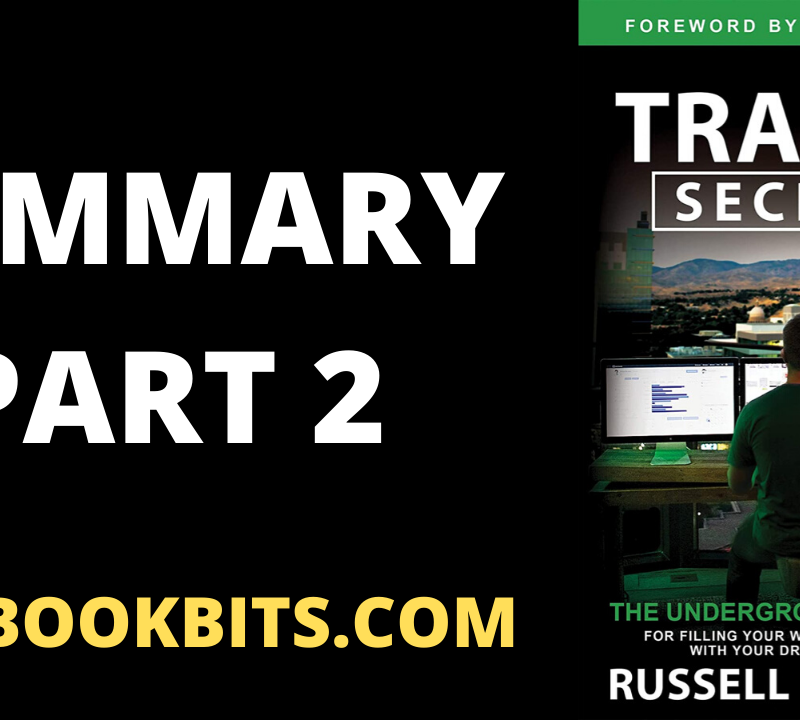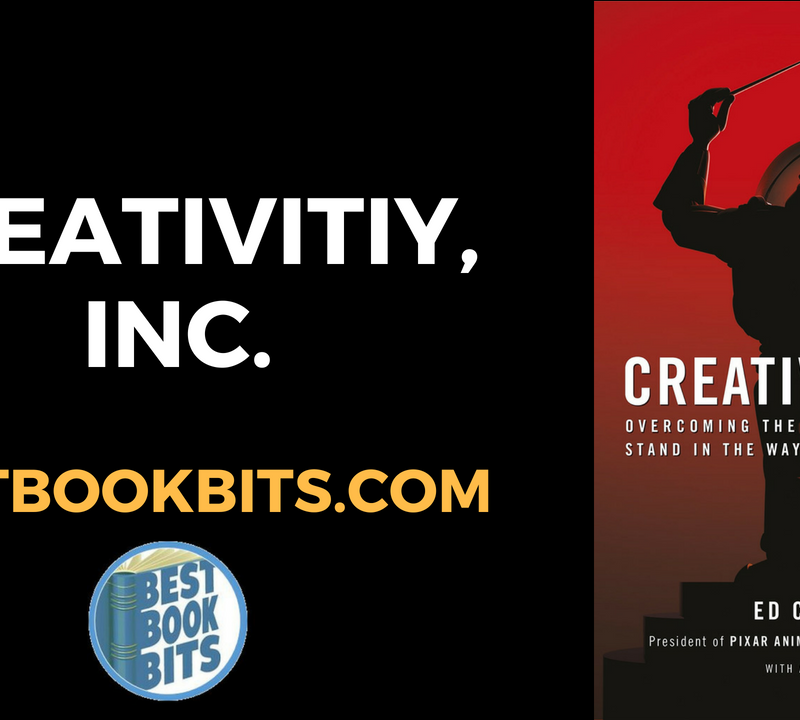★DOWNLOAD THIS FREE PDF SUMMARY HERE
? MY FREE BOOK TO LIVING YOUR DREAM LIFE”
? SPONSOR BESTBOOKBITS BY USING PATREON
? SUPPORT BESTBOOKBITS BY CLICKING THE LINKS BELOW
- 150 PDF Summaries
- Coaching Program
- Subscribe to My Channel
- Website
- Spotify
- Book Club
- Mailing List
Chapter 1: The challenge of the Future
The chapter starts with a discussion around Peter’s favorite interview question:
What important truth do very few people agree with you on?
He says the question is challenging because it require respondents to :
- reflect and talk about knowledge they created for themselves (not taught in schools)
- to become socially unpopular by taking a different stance
He justify this approach by saying that brilliant thinking is rare but courage is in even shorter supply than genius.
By continuing the argumentation around how hard it is to imagine something that doesn’t exist and predict future solutions the authors propose the following graph to differentiate progress as we see it today by creating a distinction between vertical intensive progress (technology 0 →1) and horizontal extensive progress (globalization 1 →n)
Why Start-ups?
Start-up = largest group of people you can convince of a plan to build a different future.
Chapter 2: Party like it’s 1999
Economical landscape of that period:
- 1990 — economical migration of investments in USA “ from bricks to clicks”
- 1997- Economical crash in Thailand
- 1999- Launch of the Euro
- 1998- 2000 — com mania
Paypal was founded in 1998 with the goal of creating a new internet currency to replace the $ and managed to raise funds in 2000 right before the dot.com crash.
Chapter 3: All happy companies are different
All happy companies are different: each one earns a monopoly by solving a unique problem. All failed companies are the same: they failed to escape competition.
Remember the first “contrarian” question, Peter next favorite question is:
What valuable company is nobody building?
Valuable company = Create value + Capture value.
The lesson for entrepreneurs? If you want to create and capture value don’t build an undifferentiated commodity business
The author makes the difference between Monopoly vs Perfect competition and explains how both this type of companies are trying to disguise themselves:
Example disguise monopoly: Google has a monopoly on search but emphasizes the small share of global online advertising.
Example disguise perfect competition: tries to find fake differentiators, “only British restaurant in Palo Alto”.
Chapter 4: The ideology of competition
Description of American society obsession with competition.
Analogy of War and Peace ever present in business. MBA students carry around copies of Clausewitz and Sun Tzu.
War metaphors in business language: headhunters, captive market, make a killing.
Why do people compete?
- Marx model = because they have different ideas and goals
- Shakespeare model = all combatants look more or less alike (ex: Montague vs Capulet)
War (in business like everywhere else) is destructive: while Microsoft and Google were obsessed to compete with each other Apple came along and overtook them (500 billion $ Market capitalization Apple vs 467 billion $ Google + Microsoft)
Example of how far competition can go: Square copycats.
Chapter 5: Last Mover Advantage
Value of business today = value of earnings in the future
Twitter vs New York Times
Twitter 24 bil $ valuation (2013 IPO) = 12 * NYT market cap
Wonder why?
- Twitter — holds monopoly of the future while publishing houses are loosing business everyday
- Twitter had more cash flow.
Characteristics of a monopoly:
- Proprietary technology (10 times better than any existing solution)
- Network effect (start with a niche market)
- Economy of scale
- Excellent Branding
Building a monopoly:
- perfect target market for a startup is a small group of particular peopleconcentrated together and served by few or no competitors.
- once you dominate a niche market expand to adjancent markets(always expand, example amazon and ebay)
- don’t disrupt (act of creation is more important; ex: Paypal worked with Visa vs Napster and Music Industry)
- the last will be the first, instead of first mover advantage make the last great development in a specific market and reap the fruits of a mature ecosystem.
Chapter 6: You are not a lottery ticket
Question of the day: Can you control your future ?
If you treat the future as something definite it makes sense to understand it in advance and to work to shape it. But if you expect and indefinite future ruled by randomness, you’ll give up on trying to master it.
Example of amount of extra-curricular activities required to enter elite colleges and making the argument that process trumps substance.
You can expect the future to be better or worse than the present and based on this assumption the author draws the following graph:
- Indefinite pessimism: Europe since 1970s, today Eurozone in crisis, nobody is in charge, don’t know when the crash will happen, enjoy life meanwhile = vacation mania
- Definite pessimism: from China perspective economic growth cannot come fast enough, rich people try to take money outside, poor people prepare for the worst as they know the current growth is not sustainable
- Definite optimism:Western world before 1970s (big plans that were executed: Empire State building, Panama Canal, Apollo program.
- Indefinite optimism:finance eclipsed engineering as the way to approach the future, Baby Boomers used to effortless progress, felt entitled to it.
Chapter 7: Follow the Money
Pareto principle or 80–20 rule: Vilfredo Pareto discovered that that 20% of people owned 80% of the land in Italy.
The power law becomes visible when you follow the money : in venture capital, investors try to profit from exponential growth in early-stage companies, a few companies attain exponentially greater value than all others.
Chapter 8: Secrets
Why aren’t people looking for secrets ?
Most people act as there are no secrets left to find. Example of geography.
★DOWNLOAD THIS FREE PDF SUMMARY HERE
? MY FREE BOOK TO LIVING YOUR DREAM LIFE”
? SPONSOR BESTBOOKBITS BY USING PATREON
? SUPPORT BESTBOOKBITS BY CLICKING THE LINKS BELOW
- 150 PDF Summaries
- Coaching Program
- Subscribe to My Channel
- Website
- Spotify
- Book Club
- Mailing List
What happens when a company stops believing in secrets ?
Example of Hewlett-Packard :
- 1990 company worth 9 billion $
- 2000 after a decade of inventions (first affordable color printer, first super-portable laptops) worth 135 billion $
- 2005 worth 70 billion $ (failed merge with Compaq, failed consulting/support shops)
- 2012 worth 23 billion $ as a result of abandoned search for technological secrets.
Example Fermat’s Last Theorem: after 358 years of fruitless inquiry by other mathematicians was demonstrated by Andrew Wiles in 1995.
The best place to look for secrets is where no one else is looking
Example of nutrition where most of the policies were influenced by lobbyist and scientific assessments and discoveries are yet still to be developed.
Chapter 9: Foundations
Beginnings are special. They are qualitatively different from all that comes afterward
Ownership, Foundation and control
- Ownership = who legally owns a company’s equity? (founders, employees, investors)
- Possession = who actually runs the company on a daily basis? (managers)
- Control = who formally governs the company affairs? (board of directors which includes founders)
On the bus or off the bus: everyone should be involved full time
Cash is not king & Vested interests: startups don’t need to pay high salaries because they can offer something better, part ownership of the company itself.
Equity can’t create perfect incentives, but it’s the best way for a founder to keep everyone in the company broadly aligned.
Chapter 10: The Mechanics of Mafia
Recruiting Conspirators, Culture (Hoodies?), Do one thing, Build a cult
Chapter 11: If you build it, will they come?
Short answer: no.
Startups should care about sales just as much as they care about the product.The distribution is the bottle neck for a business.
Primer on how to sell a product
CLV (Customer Lifetime Value) > CAC (Customer Acquire Cost)
The more expensive the product-> bigger sales costs-> more important to sale.
Look around, if you don’t see a salesperson, you’re the salesperson
Chapter 12: Man and Machine
Complementarity human-machine vs robots will take our jobs
Globalization = substitution, Technology = complementarity.
Example Igor (Paypal) :
- mid 2000 Paypal was loosing 10 mil $/ month because of credit card fraud (impossible to review thousands of transactions per minute)
- elite team mathematicians solve problem algorithmically
- fraudsters were learning and breaking the new rules fast
- solution: assemble a team of human analysts to review most suspicious transactions flagged by the algorithm.
- This hybrid system was named “Igor” after the Russian fraudster who claimed he will never be caught
- Paypal records first profit in 2002 vs quarterly loss of 29.3 mil $ one year before
This hybrid solution has been used by FBI for detecting fraud and later inspired creation of Palantir.
Chapter 13: Seeing green
Most cleantech companies crashed because they neglected one or more of the 7 questions every business should answer:
- The Engineering question: Can you create breakthrough technology instead of incremental improvements?
- The Timing question: Is now the right time to start your particular business?
- The monopoly question: Are starting with a big share from a small market?
- The people question:Do you have the right team?
- The distribution question: Do you have a way to deliver your product?
- The durability question: Will your market position be defensible 10 and 20 years into the future?
- The secret question:Have you identified an unique opportunity that others don’t see?
About Social Business: hundreds of undifferentiated products all in the name of one over-broad good.
Corporate Green = NGO Goodness
Challenge for entrepreneurs to create Energy 2.0 is to think small.
Chapter 14: The Founders Paradox
Founders are important not because they are the only ones who’s work has value, but rather because a great founder can bring out the best work from everybody at his company
People distribution of traits vs Founders distribution of traits
The lesson for founders is that individual prominence and adulation can be exchanged for individual notoriety and demonization at any moment
The greatest danger for a founder is to become so certain of his own myth that he loses his mind. But an equally insidious danger for every business is to lose all sense of myth and mistake disenchantment for wisdom.
Conclusion: Stagnation or Singularity?
Short answer: it depends on us.
Four scenarios for the future:
- recurrent collapse
- plateau
- extinction
- takeoff
Whether we achieve the Singularity on a cosmic scale is perhaps less important than whether we seize the unique opportunities we have to do new things in our own working lives.
The essential first step is to think for yourself. Only by seeing our world anew, as fresh and as strange as it was to the ancients who saw it at first, can we both re-create it and preserve it for the future.
★DOWNLOAD THIS FREE PDF SUMMARY HERE
? MY FREE BOOK TO LIVING YOUR DREAM LIFE”
? SPONSOR BESTBOOKBITS BY USING PATREON
? SUPPORT BESTBOOKBITS BY CLICKING THE LINKS BELOW
- 150 PDF Summaries
- Coaching Program
- Subscribe to My Channel
- Website
- Spotify
- Book Club
- Mailing List
























